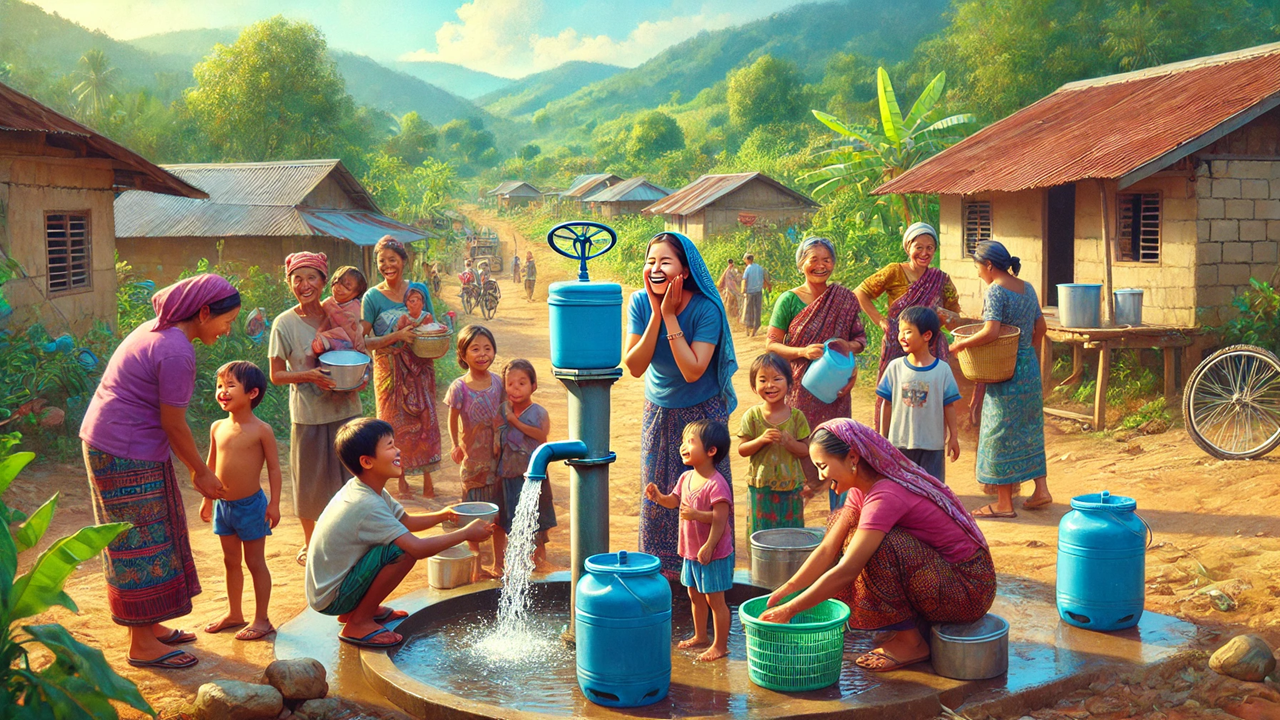Water for All: A Human Rights-Based Approach to Transforming Lives in Asia and the Pacific
This article explores the findings of a report by the Asian Development Bank and Human Right 2 Water, which advocates for a Human Rights-Based Approach (HRBA) to water and sanitation in Asia and the Pacific. The report highlights the importance of integrating principles like nondiscrimination, participation, transparency, accountability, and sustainability into water and sanitation projects to ensure equitable access for all, particularly marginalized communities.

The Urgent Need for Water and Sanitation
In a world where access to water is a basic necessity, it’s startling to realize that 2.2 billion people still struggle to obtain safe drinking water and 3.5 billion lack access to proper sanitation. These numbers are particularly alarming in Asia and the Pacific, where nearly 500 million people are without basic water supplies. The situation isn’t just a matter of inconvenience; it’s a crisis that puts millions at risk of disease, poverty, and social exclusion.
A recent report titled "Paving the Inclusive Path toward Water for All: Policies and Cases Supporting a Human Rights-Based Approach in Asia and the Pacific" delves into this issue, presenting a comprehensive strategy that could turn the tide. The report, a collaborative effort by the Asian Development Bank and Human Rights 2 Water, emphasizes the importance of treating water and sanitation not just as services but as fundamental human rights.
A Shift from Needs to Rights
Historically, efforts to improve water and sanitation have focused on meeting basic needs. However, this approach often overlooks the deeper issues of inequality and exclusion that prevent marginalized groups from accessing these essential services. The report advocates for a Human Rights-Based Approach (HRBA), which shifts the focus from merely fulfilling needs to empowering individuals, especially those in vulnerable communities.
The HRBA integrates key principles such as nondiscrimination, participation, transparency, accountability, and sustainability into every stage of water and sanitation projects. By doing so, it ensures that everyone—regardless of gender, ethnicity, or economic status—can benefit from safe water and sanitation.
Key Principles for Sustainable Change
The report highlights several key principles that are essential for creating sustainable and inclusive water and sanitation systems.
First, nondiscrimination and equity are crucial. Projects that include women and Indigenous Peoples in their design and implementation are more likely to succeed because they address the specific needs and challenges of these groups. For example, a project in the Lao People’s Democratic Republic focused on improving access to water in small towns, while simultaneously empowering women by involving them in decision-making and providing them with educational opportunities in the water sector.
Second, participation and inclusion are vital for long-term success. Engaging local communities in the planning and execution of projects fosters a sense of ownership and encourages behavioral changes that support the sustainability of these initiatives. In Indonesia, for instance, community involvement in wastewater management led to the successful implementation of sanitation systems that are still in operation today.
Another critical element is access to information and transparency. When communities, particularly young people, have access to clear and accurate information about water and sanitation issues, they can make informed decisions that benefit everyone. Projects in Nepal and the Philippines have demonstrated that transparency not only builds trust but also drives action, leading to better outcomes for all.
Ensuring Accountability and Sustainability
To truly make a difference, water and sanitation projects must be accountable to the people they serve. This means establishing feedback mechanisms, grievance processes, and regular monitoring to ensure that these projects meet their goals. In India and Indonesia, the introduction of structured feedback systems has led to significant improvements in project design and effectiveness.
Finally, sustainability is the cornerstone of any successful water and sanitation initiative. This goes beyond the physical infrastructure to include environmental considerations, sound utility governance, and active community participation. Projects in Bangladesh and Vietnam have shown that when communities are involved in managing their water resources, the benefits last longer, and the impact is more profound.
A Path Toward a Brighter Future
The report’s findings are clear: integrating human rights principles into water and sanitation governance is not just a moral imperative; it’s a practical strategy for achieving sustainable, equitable, and inclusive outcomes. As the global community strives to meet the Sustainable Development Goal of clean water and sanitation for all by 2030, the HRBA offers a roadmap for success.
By focusing on the rights of individuals, particularly those in marginalized communities, and by ensuring that these rights are respected, protected, and fulfilled, we can pave the way toward a future where everyone has access to safe water and sanitation—a future where no one is left behind.
- FIRST PUBLISHED IN:
- Devdiscourse
ALSO READ
Human Rights Violations Spark Protests and Political Turmoil in West Bengal
Nepal Certifies Transitional Justice Bill to Address Civil War Human Rights Violations
Danish Court Rejects India's Extradition Request Over Human Rights Concerns
UKPNP Raises Alarm Over Human Rights Violations in Pakistan-Occupied Kashmir
UN Dispatches Fact-Finding Mission to Bangladesh on Human Rights Violations










